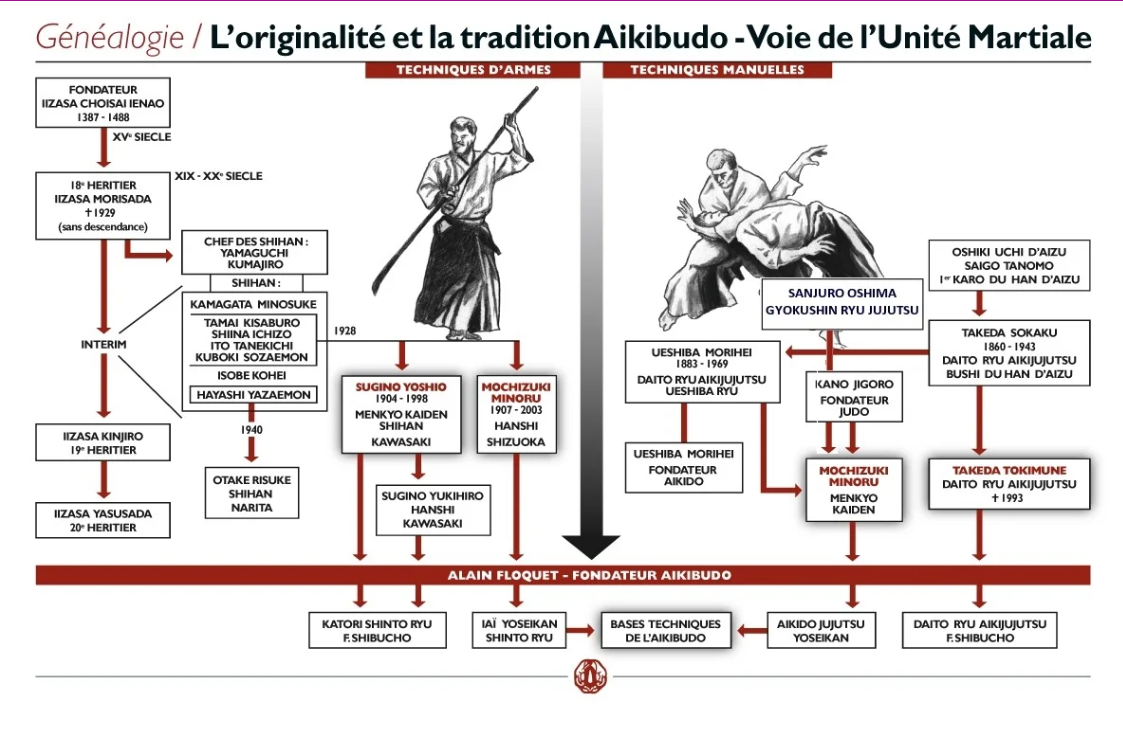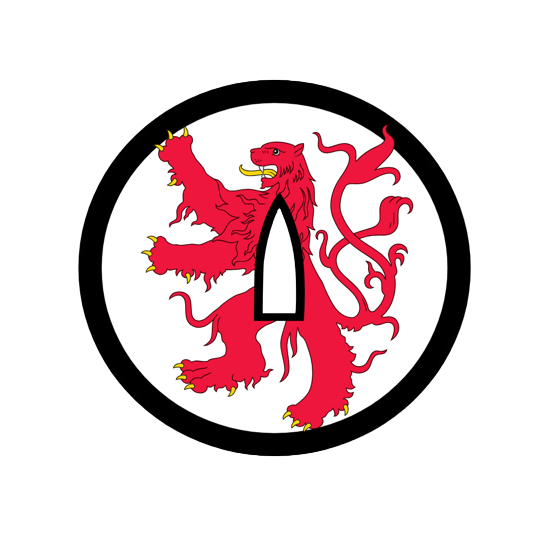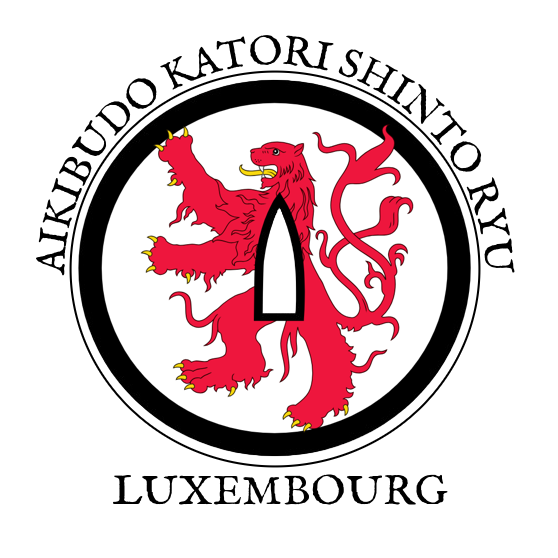AIKIBUDO
In medieval Japan, many warriors were experienced in the use of weapons (sword, bow, spear, etc.), however the ruling class (clan chiefs called Daimyo) had to possess sophisticated and secret techniques in all situations.
From the 10th century onwards, the Japanese martial tradition, Bushido, has been codified. It is commonly considered that Minamoto Yoshimitsu, a prominent war leader, sumo champion, poet and musician, created the daito ryu. He is also known as the first person, in Japan, to have studied the bodies of men killed in combat, the effect of cuts, strikes and keys, in order to develop new techniques.
At the end of his life he was appointed governor of the province of Kai where one of his descendants founded the Takeda dynasty. The Takeda clan pushed the development of defense techniques very far, some of which were kept secret for strategic reasons.
At the end of the 19th century, following fratricidal battles between clans, the time of armed samurai came to an end. Lord Saigo Tanomo then decided to authorize the teaching of his techniques, a true martial and cultural treasure, to certain people outside his clan.
In 1898, Takeda Sokaku formalized all the martial heritage he had received from Saigo Tanomo, under the name of Daïto Ryu Aiki Jujutsu and ensured its fame, through his immense skill. He set up his school in Hokkaido, an island in the north of Japan.
From 1920 to 1931, the great Master Takeda Sokaku transmitted to his disciple Ueshiba Moritaka, the basic knowledge and techniques of Daito Ryu Aiki Jujutsu.
Master Ueshiba in turn passed on, after having developed it, his knowledge to students who would also become prodigious masters, guarantors of a long tradition, including Master Mochizuki Minoru.
In 1951, Master Mochizuki Minoru was sent to Europe on an official cultural mission. For two years he had been teaching his master’s art, according to his own martial experience under the name of Aikido-Jujutsu. On his return to Japan, Master Mochizuki trained a young French judoka, Jim Alcheik, in his dojo the Yoseikan which means « House of Education and Righteousness ».
In 1958, Jim Alcheik, returning from Japan, officially represented Yoseikan Aikido Jujutsu in Europe and created the French Federation of Aikido-Taijitsu and Kendo. Alain Floquet became one of his assistants. Jim Alcheik tragically passed away in 1962.
To ensure the future of Aikido-jujutsu in France, Alain Floquet, already 2nd dan, contacted Master Mochizuki who sent his son Hiroo to Paris to develop this art.
In 1966, Alain Floquet was appointed Technical Director of the Aikido-Yoseikan school for France.
In 1974, he founded C.E.R.A. (Circle of Studies and Research on Aikibudo).
In 1978, Master Mochizuki Minoru awarded him the grade of 7th dan and the title of « Kyoshi », thus recognizing the importance of his action.
In 1982, Master Floquet decided to give his practice, his style and the art that results from it: « Aikibudo », in full agreement with Master Mochizuki Minoru. He also reconnected with the parent school and the heir of Daito Ryu Aiki Jujutsu, Takeda Tokimune, son of the great Master Takeda Sokaku, who entrusted him with the mission of representing him. He integrated this original knowledge of Aiki Jujutsu into his teaching of Aikibudo, alongside that of the weapons school of Tenshin Shoden Katori Shintô Ryu.
In 1983, Aikibudo united with Aikido to found, as a co-discipline, the French Federation of Aikido, Aikibudo and Affinitaires (F.F.A.A.A.). Since then, under the leadership of master Alain Floquet, this art has developed throughout the world where it finds more and more followers. Drawing its roots from traditional schools of Japanese martial heritage, Aikibudo goes beyond the simple framework of technical practice.
KATORI SHINTO RYU
Tenshin Shōden Katori Shintō-ryū (天真正伝香取神道流) is one of the oldest Japanese martial arts. It was founded by Iizasa Ienao, who lived near Katori Shrine (Sawara City, Chiba Prefecture) at the time. The ryū is purported to have
been founded in 1447, but some scholars state that it was about 1480.
Iizasa Ienao was a respected spearman and swordsman whose daimyō was deposed, which encouraged him to relinquish control of his household to conduct purification rituals and study martial arts in isolation.
In 1896, the 18th sōke died without a male heir. Shihan Yamaguchi Eikan governed the school until his death on 14 March 1917. Until Iizasa Kinjiro married into the Iizasa household, the school was headed in order by Tamai
Kisaburo, Shiina Ichizo, Ito Tanekichi, Kuboki Sazaemon, Isobe Kohei, Motomiya (Hongu) Toranosuke, Hayashi Yazaemon, and Kamagata Minosuke.
On 6 March 1960, the school received the first ever « Intangible Cultural Asset » designation given to a martial art by the Japanese government.


